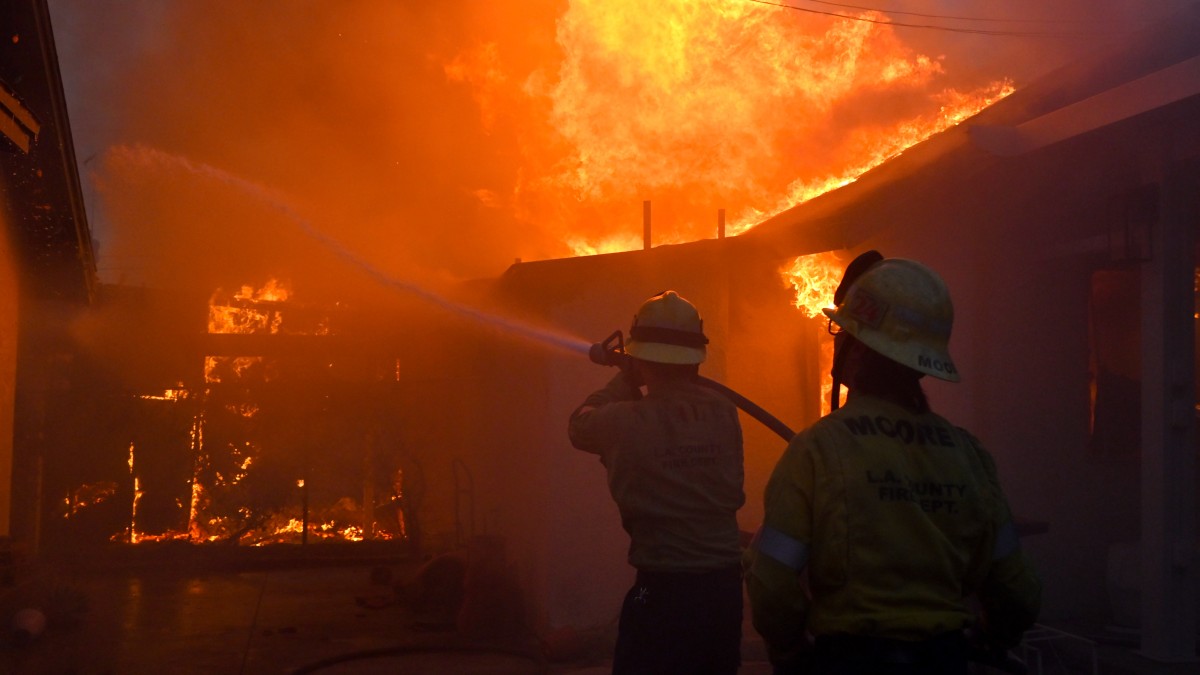Hundreds of incarcerated firefighters are battling the widespread Los Angeles fire in California.
As powerful winds and dry conditions drive multiple blazes across the region, the task of the dangerous job the firefighters are doing is necessary.
However, online, it has ignited a discourse on slavery.
“Government officials use legal slavery to combat the effects of climate change (caused by their billionaire friends),” a user who goes by @somegr8feeler posted on social media platform X.
Prisoners are going to be at the front lines of the LA fires. Government officials use legal slavery to combat the effects of climate change (caused by their billionaire friends). There are 2 current congressional bills to end legal slavery & fix the 13th amendment loophole pic.twitter.com/5Ht3n8lzoU
— loverboy butch 🩷 (@somegr8feeler) January 8, 2025
Another user, who goes by @Tim_Chatterton, wrote, “Hmmm…. Looks like property of the wealthy is being protected by (near) #SlaveLabour…. What other delights will our #ClimateFuture bring us?”
On Reddit, a user wrote, “And these prisoners that are out there saving lives and risking their own to do so are being paid like ten dollars a day. There needs to be some uproar and demands by the public to change the prison slave labor that’s allowed to happen.”
Impact Shorts
More ShortsBut why is slave labour being brought up in this context?
It’s because of the 13th Amendment.
The 13th Amendment
The 13th Amendment reads:
“Neither slavery nor involuntary servitude, except as a punishment for crime whereof the party shall have been duly convicted, shall exist within the United States, or any place subject to their jurisdiction.”
This clause has allowed for convict-leasing– something critics have called a new form of slavery.
The California Department of Corrections and Rehabilitation (CDCR) reported Thursday (January 9) that 783 incarcerated individuals have been deployed to assist nearly 2,000 California Department of Forestry and Fire Protection (Cal Fire) personnel in combating the blazes, according to a recent report by the Guardian.
The CDCR operates more than 30 “fire camps” statewide, where incarcerated people serving prison sentences are trained in firefighting and deployed to emergencies, including wildfires, floods, and other disasters.
Historically, these crews have accounted for as much as 30 per cent of California’s wildfire response force, making them an important component of the state’s strategy amid increasingly severe fire seasons driven by the climate crisis.
Underpaid volunteers: Slavery by another name?
In defence of the practice, it is often cited that firefighting positions are voluntary and require participants to meet specific criteria. Incarcerated individuals are not assigned to these roles without their consent.
However, at present, the incarcerated firefighters receive an extremely low pay— a maximum of $10.24 per day, according to Forbes— for the dangerous and physically demanding work.
Critics argue that the meagre pay and lack of long-term benefits—like pathways to employment as firefighters after release—are emblematic of systemic inequities in prison labour.
Broader context of prison labour in US
The debate over the use of prison labor extends beyond firefighting. Nationwide, incarcerated workers contribute an estimated $11 billion annually in labour, often receiving pennies per hour.
Their work included producing hand sanitiser, digging mass graves during the COVID-19 pandemic, and cleaning up hazardous materials.


)

)
)
)
)
)
)
)
)



